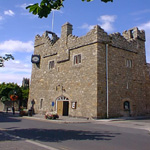|
June / 2020 - Michael Ryan
|
| Dalkey
Quarry became part of our regular route on our daily escribed exercise
walk and entering it from the west side was a real pleasure we were
greeted with a great symphony of bird song. At the entrance a Song Thrush
sang from the top of a sycamore at the cliff edge, his long seemed to
be amplified by the natural amphitheatre of the quarry. On the other side of the path a Blackcap poured out a cascade of song. A Chiffchaff sang regularly from the bank above, where one of the park’s loveliest trees, a Sweet Chestnut has still to come into full leaf. One morning we saw a Jay picking up a snail a little bit further on where Wrens and Dunnocks flitted among the undergrowth. Further along in the quarry another Song Thrush sang from the middle of the gorse, lovely to have two of these birds holding territory so close together since Song Thrushes have been in decline in recent years. On the ground level of the quarry a Willow Warbler has been a regular summer visitor for years. They do live up to their name and frequent little clusters of willow and, there are a lot of willow trees growing around this end of the quarry. Willow trees are very beneficial to insects as are the hawthorns whose presence is so much more noticeable when they’re covered in soft white flowers showing some of them as sizeable trees. |
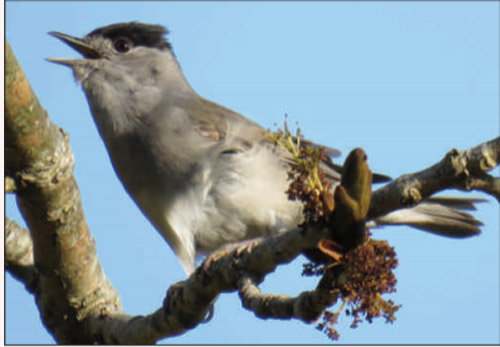 Blackcap singing in Dalkey Quarry |
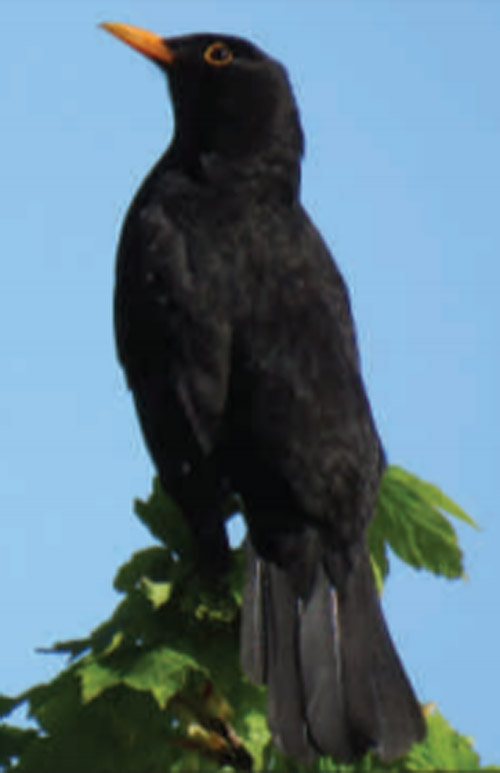 Blackbird
in the quarry Blackbird
in the quarryPhoto: Michael Ryan |
A
lot of comfort was obtained from birdsong in the last few months and
it was a silver lining that the peace and quiet of the lockdown coincided
with lovely weather enhancing the song. The peak of the bird song happens
around now before they concentrate on raising and feeding chicks. Many Blackbirds cease singing before mid- summer, so make the most of nature’s soundtrack while it is still around us. In the garden at home I couldn’t figure out what had happened to the small bumblebee, tilted on its back, propped against the white flowers high up on a stem of a Chilean Lily. The bee looked lifeless then I saw it was actually being grasped in the front legs of a little yellow spider. A gruesome sight and I’d probably have intervened if I had seen it earlier but the poor bee was well beyond help by now. |
|
I
recognised its assassin as a Crab Spider, a species whose name derives
from its hunting strategy of perching totally motionless, holding its
front legs spread wide apart, waiting to sense an insect flying in to
get pollen then striking, grabbing and injecting venom into the unfortunate
bee or fly. They will pick a flower, a part of whose colouring matches their own, and position themselves on it as the yellow tips of the stamens of the Chilean Lily’s flowers were almost the exact colour of the spider’s legs that were held aloft. I had seen the same individual spider the previous day as it perched on dandelion heads and had taken numerous photos of it. It had moved from one dandelion to another by darting along a strand of silk it had spun from its abdomen, then playing out the silk to drift in the air until it made contact with another surface. I marvelled at it waving its legs about to guide and tighten the silk and could actually see the thin strand appearing from the spider’s abdomen when I looked back at the photos but it was a bit disconcerting to later see it had killed the bee. The garden was getting like a crime scene, since not far from that killing theft was taking place in another flower border. I was looking at photographs I had taken of the very elegant flowers of an Aquilegia and noticed that, when magnified on the screen, you could see the narrow base of the downward facing flowers all had little holes torn in them. I had only recently been reading about this and realised that what had happened here was an occurrence called ‘nectar robbing The flower’s nectar is at the narrow base of the flower and only bees and insects with long tongues can reach into them so some shorter tongued bees just bite a little hole in the side of the flower and suck the nectar out. Flowers produce nectar to attract insects. They then carry the pollen on their bodies thus helping the plant to reproduce by distributing it. When the bee takes the nectar without entering the flower there’s no apparent benefit to the flower hence the term ‘nectar robbery’! |
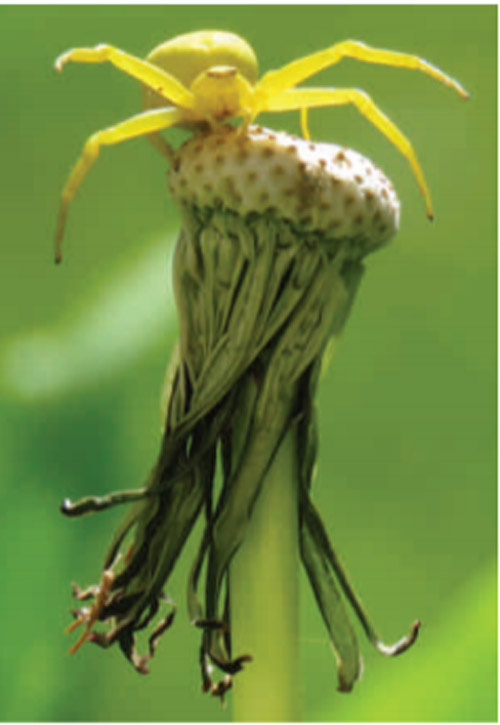 Crab spider on dandelion Photo: Michael Ryan |
|||
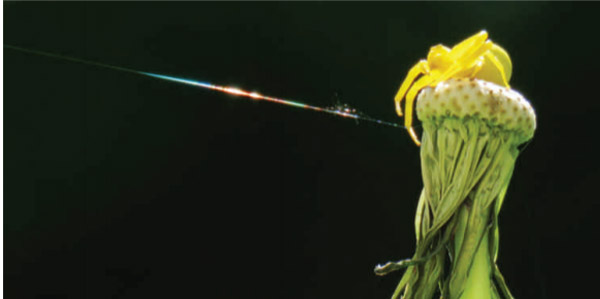 Crab spider on dandelion, sending out a strand of silk Images & Text by :- Michael Ryan |
||||
DALKEY HOME PAGE | DALKEY COMMUNITY COUNCIL | DALKEY HERITAGE COMPANY | CANNONAID
|
|


